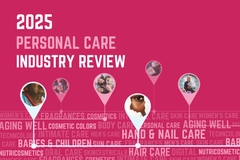CTPA launches tools to verify cosmetic claims and aid product classification

25 Apr 2023 --- UK trade body Cosmetic, Toiletry and Perfumery Association (CTPA) has published a tool to help cosmetic companies build their approach to claim substantiation. Reliance on data and test results is commonplace in the industry but these factors alone do not help build claim support dossier in every instance.
“A company may have a claim on a product label talking about the product benefits and may have all the required claim substantiation, but these two should always be linked together, and that’s where this tool comes in,” Nico Shaw Núñez, head of international growth and regulatory services at CTPA tells PersonalCareInsights.
“The tool is, therefore, a useful template that standardizes how claim substantiation should be recorded and collated in the Product Information File (PIF). However, what it also does is to allow the regulator to really understand what claims mean and to ensure that companies not only have the correct substantiation in place, but that they are able to communicate more effectively with our regulators.
Dossiers have to reliably present evidence. In general, claims investigate attributes of a cosmetic product to support product claims and comply with cosmetic legislation and advertising laws.
According to CTPA, there must be an argument or narrative within all claim evidence documentation that connects the information available that substantiates the claims. Companies must do this as part of their requirements for the Product Information File (PIF) and may have to present this to relevant authorities if requested.
Branching out from the building blocks CTPA recently stated that companies should only use “free from” claims when it is intended to inform consumer choice.
CTPA recently stated that companies should only use “free from” claims when it is intended to inform consumer choice.
Last year, CTPA stated that companies should only use “free from” claims when it is intended to inform consumer choice. Consumers should not be led to believe that a cosmetic product with a free-from claim is safer or a better purchase decision, which legally cannot be true.
The association sought to encourage the industry to “rebuild confidence” in products and ingredients to minimize further damage to the industry by talking more positively about cosmetics and its components.
The tool follows the principles of the building blocks of claim support, applying industry best practices in relation to the review, examination and rationalization of claim substantiation. It takes into account the factors that must be considered when building robust claim substantiation.
CTPA’s tool is aimed at helping companies build their approach to “claim substantiation.”
Using the tool will not necessarily mean a claim is approved, for example, by Clearcast prior to broadcast, but it will certainly help companies answer the questions: Do I understand what this claim actually means and can I substantiate it with the information I have available?,” explains Shaw Núñez.
For example, the data from tests, the formula rationale, or the information from literature reviews always have to be assessed against – and clearly linked to – the context in which the claim is made and consumer understanding of the claim.
Collaboration with cosmetic regulators
The CTPA Tool for Claim Substantiation is the result of ongoing work with industry and regulators to improve how the industry communicates with consumers.
“Industry is aware of the legal responsibilities behind making claims, starting from the requirements of the UK and EU Cosmetics Regulations and Common Criteria, all the way to the way in which the Advertising Standards Authority (ASA), Clearcast and the Competitions and Market Authority (CMA) view and review claims,” Shaw Núñez says.
The association has developed this tool as a direct result of listening to industry and regulators in the UK. “Our regulators expressed a desire to better understand the information that industry was developing to substantiate claims and the cosmetics industry wanted to have an opportunity to better explain all the information and scientific data that goes into the development of our products,” he says.
The tool bridges the gap and will allow for better exchange between industry and regulators. In addition, it allows companies to have more confidence in their claims, ensuring that due diligence has been done and recorded in the development of products, allowing marketing teams to understand better the work behind claim substantiation.
“As a responsible industry, we are always looking for ways to continue to improve. Better understanding and communication within companies and with regulators will ultimately provide greater trust to consumers,” he explains. Herbal products are most difficult to classify as cosmetic.
Herbal products are most difficult to classify as cosmetic.
Assessing cosmetic classification
According to EU and UK regulation, cosmetics must be correctly classified before being placed on the market.
However, with certain products, such as herbal medicine, it can be unclear or difficult to determine whether it is a cosmetic thereby coming under the scope of legislation. The term “borderline” is used to describe these products because its composition, presentation and the claims it makes bring the classification into question.
To help classify such products CTPA has created the Decision Tree for Borderline Assessment to guide companies through the classification process and the assessment of a product with specific relevance to claims.
The tool provides examples from different contexts to reduce the risk of an inaccurate classification and how to remain within the definition of a “cosmetic.”
In addition to the publication of the CTPA Tool for Claim Substantiation and the Decision Tree for Borderline Assessment, future training events will be announced to allow industry players to engage directly about the initiative.
By Inga de Jong












